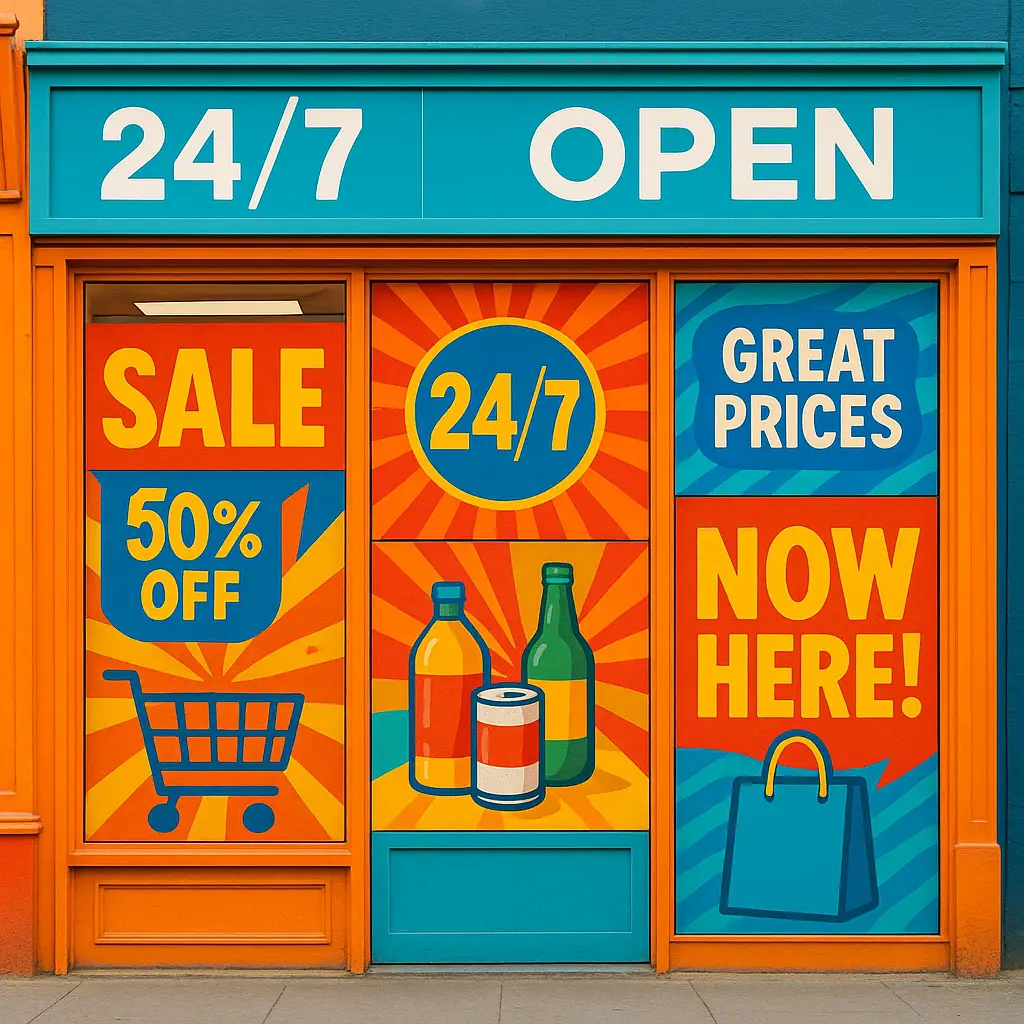Introduction: The Power of Two – Why Print and Digital Belong Together
In a world dominated by screens, it’s easy to dismiss print marketing as a relic of the past. However, the smartest brands know a powerful secret: print isn’t dead, it’s just one half of a winning equation. The true potential for growth and customer engagement is unlocked when you strategically integrate print and digital marketing. This isn’t just about running separate campaigns; it’s about creating a unified, multi-channel ecosystem where each element supports the other. By using tangible print materials to drive online traffic and digital interactions, you can create a truly seamless customer journey. This cohesive approach not only strengthens your consistent branding across all touchpoints but also provides measurable results by linking physical engagement to digital data. Let’s explore the actionable strategies that bridge this gap and amplify your marketing impact.
Section 1: Laying the Groundwork: Your Integrated Marketing Strategy

Before you start plastering QR codes on every surface, it’s crucial to step back and build a foundational plan. A successful effort to integrate print and digital marketing doesn’t happen by chance; it’s the result of a deliberate, cohesive strategy. This initial phase is all about defining your objectives. What specific action do you want a user to take? Is it a newsletter signup, a product purchase, or social media engagement? Your plan must also ensure rock-solid consistent branding across every touchpoint. The design, tone, and offer on your direct mail piece must perfectly align with the digital destination it promotes. By establishing these core principles first, your print and digital strategies will work in harmony, creating the seamless customer journey that converts. This foundational work transforms a simple tactic into a powerful multi-channel marketing engine that delivers measurable results.
Section 1.1: Defining Unified Campaign Goals
Every successful integrated campaign is built around a single, clear objective. Before you design a flyer or build a landing page, ask: what is the primary action we want the user to take? Is the goal to capture an email lead, drive a direct sale with a unique promo code, or boost social media follows? This unified goal ensures your print call-to-action perfectly aligns with its digital destination. This focus is the key to effective multi-channel marketing, preventing user confusion and creating a truly seamless customer journey from the physical to the digital realm.
Section 1.2: Ensuring Consistent Branding and Messaging
A customer’s transition from your physical ad to your digital platform must feel like a single, uninterrupted conversation. This is where impeccable consistent branding becomes critical. The visual identity—your logo, color palette, and typography—and the tone of your message must be identical across both the print piece and its corresponding digital destination. This alignment is the linchpin for a truly seamless customer journey, building user trust and ensuring your multi-channel marketing efforts feel cohesive, professional, and effective.
Section 1.3: Understanding Your Customer’s Journey Across Channels
To effectively integrate print and digital marketing, you must visualize the customer’s experience from start to finish. Consider their context: where will they encounter your print material, and what device will they use to go online? Mapping this path is fundamental to effective multi-channel marketing. By understanding their perspective, you can ensure the transition from a physical item to a digital action is frictionless, creating the truly seamless customer journey that drives conversions and deepens engagement with your brand.
Section 2: Actionable Ways to Seamlessly Integrate Print and Digital

With your foundational strategy in place, it’s time to build the bridges that connect your physical materials to your digital world. The key to successfully being able to integrate print and digital marketing lies in using simple, effective tools that make this transition feel instant and intuitive. These powerful print and digital strategies are all about creating tangible gateways that drive online traffic and deepen customer engagement. From the ubiquitous QR code that instantly transports a user to a landing page, to sophisticated personalized URLs (PURLs) that deliver a custom-tailored online experience, the goal is always to create a frictionless, seamless customer journey. In the following sections, we’ll dive into these actionable tactics, including innovative approaches like augmented reality marketing, to show you how to turn your multi-channel marketing plan into a high-performing, measurable reality.
Section 2.1: Tactic 1: Bridge the Physical-to-Digital Gap with QR Codes
QR codes are the workhorse of modern integrated campaigns. This simple, scannable technology is the most direct way to drive online traffic from a physical asset. Effective QR code marketing involves placing a unique code on flyers, packaging, or direct mail that links to a specific landing page, video, or promotional offer. This tactic removes friction, instantly connecting a user’s offline interest to an online action and creating a truly seamless customer journey from the tangible to the digital world.
Section 2.2: Tactic 2: Create Personalized Experiences with PURLs
Take personalization to the next level with Personalized URLs (PURLs). A cornerstone of advanced PURLs marketing, a PURL is a unique web address created for a specific individual, typically used in direct mail. When a recipient visits their custom link, they land on a page pre-populated with their information or a bespoke offer. This high-touch tactic makes the customer feel uniquely valued, elevating your multi-channel marketing and creating a profoundly seamless customer journey from a physical mailer to a custom-built digital experience.
Section 2.3: Tactic 3: Drive Social Engagement from Print Materials
Your print assets are a powerful launchpad for digital conversations. Encourage user-generated content by prominently featuring a unique, memorable campaign hashtag on collateral like event posters, packaging, or in-store displays. This prompts customers to share their experiences on social media, turning them into brand advocates. This simple tactic is a cornerstone of effective multi-channel marketing, transforming a one-way print message into an interactive dialogue that amplifies your reach and builds a vibrant online community around your brand.
Section 2.4: Tactic 4: Bring Print to Life with Augmented Reality (AR)
Go beyond static images with augmented reality marketing (AR). This cutting-edge tactic transforms your print materials into interactive digital experiences. When a user points their smartphone at your catalog or business card, they can unlock 3D product visualizations, video tutorials, or even “try on” furniture in their own space. This innovative approach creates an unforgettable “wow” factor, establishing a truly immersive and seamless customer journey from the printed page to a dynamic digital overlay, pushing the boundaries of multi-channel marketing.
Section 2.5: Tactic 5: Align Direct Mail with Email Marketing Campaigns
Amplify your message by synchronizing your direct mail and email efforts. Imagine a potential customer receiving your physical postcard and then, a day or two later, seeing a related email in their inbox. This “one-two punch” approach is a masterclass in effective multi-channel marketing. It not only dramatically increases your message’s visibility but also reinforces your call-to-action. By aligning these two powerful channels, you create a cohesive and seamless customer journey that feels both intentional and persuasive, boosting response rates.
Section 2.6: Tactic 6: Use Print to Promote Online-Exclusive Content or Offers
Create a powerful incentive for action by making your digital channels the home of exclusive value. Use your print materials—from flyers to package inserts—to advertise a special offer, a downloadable guide, or a discount code that can only be accessed online. This strategy effectively uses scarcity and exclusivity to drive online traffic from your physical assets. It’s a fundamental tactic to successfully integrate print and digital marketing, giving customers a compelling, tangible reason to complete the seamless customer journey to your website or landing page.
Section 3: Measuring What Matters: Tracking the ROI of Your Integrated Campaigns

The greatest advantage when you integrate print and digital marketing is the power of measurability. For years, the core challenge of traditional print was a fuzzy ROI. But by directing users to a digital endpoint, you transform every physical interaction into a trackable data point. This is the game-changing benefit of a truly cohesive multi-channel marketing strategy. The tactics we’ve discussed—from dedicated QR codes to PURLs—don’t just create a seamless customer journey; they build a clear data trail. You can now definitively measure how many people scanned your flyer, visited from a direct mail piece, or used a print-exclusive promo code. This allows you to precisely attribute online traffic and conversions back to specific offline assets, finally giving you a clear, data-driven understanding of your print campaign’s performance and impact on your bottom line.
Section 3.1: Key metrics to Monitor
To accurately measure success, focus on the specific data points that trace the user’s path from physical to digital. Key metrics include unique landing page visits, conversion rates, and the total number of QR code scans from each print asset. Don’t forget to track the redemption rates of print-exclusive promo codes and engagement with specific PURLs. These numbers provide a clear picture of how effectively your print collateral is driving digital action, turning your multi-channel marketing efforts into a source of valuable, actionable insights.
Section 3.2: Tools for Effective Tracking (UTMs, QR Analytics, etc.)
To capture these vital metrics, leverage specific tracking tools. Use UTM parameters—small snippets of code added to your URL—to tag links in your QR codes or PURLs. This tells your analytics platform precisely which flyer or mailer drove the visit. Furthermore, most dynamic QR code generators offer built-in analytics, providing data on scan counts, times, and locations. These tools are essential for any effective multi-channel marketing strategy, providing the hard data needed to prove the value of your integrated campaigns.
Conclusion: Moving Forward with a Unified Marketing Front
The era of pitting print against digital is officially over. The path forward for ambitious brands is clear: to thrive, you must thoughtfully integrate print and digital marketing into a single, powerful force. This isn’t just a trend; it’s a fundamental shift toward smarter, more effective multi-channel marketing. By using tangible print materials to drive online traffic and create a truly seamless customer journey, you’re not just gaining clicks—you’re building deeper relationships and brand loyalty. The strategies we’ve covered, from the foundational importance of consistent branding and clear goals to actionable tactics like QR codes and AR, all lead to one crucial outcome: measurable, data-driven results. It’s time to stop thinking in channels and start thinking in customer journeys. By building a unified marketing front, you transform separate campaigns into a cohesive ecosystem that captivates your audience and delivers undeniable ROI.




